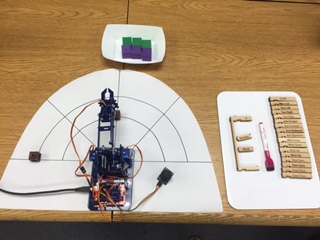Undergraduate and Graduate Robotics Curriculum For UNR College of Engineering
Abstract: This project will develop an undergraduate/graduate curriculum as part of a computer science program. The aims of this experience development include: Update current robotics courses to make them accessible for undergraduate students and to provide a basis knowledge for future robotics courses; Develop three new courses relating to robotics will be created for undergraduates. In addition, four existing courses will be made more accessible to early undergraduate students. These courses will help to educate the students of University of Nevada, Reno about robotics skills critical to current employment needs; Look at changing the undergraduate UAS minor to include these new courses; Increase both the depth and breadth of the undergraduate robotics experience; and Provide students with a mastery of the Robot Operating System (ROS) Better prepare undergraduates for graduate school, or work at a NASA center or employment in robotics, a NASA-related industry. The objectives of the education plan are to provide multidisciplinary training to a broad body of students. We will focus on integrating research with undergraduate and graduate education and leverage state-of-the-art facilities in the UNR College of Engineering. We will also pursue an aggressive outreach effort in first- and second-year CSE and ME courses in order to recruit as many students (and especially underrepresented students) to participate in undergraduate courses with the goal of preparing them for a career in a major NASA-related field. Finally, an overall goal of the project is to investigate the creation of BS and MS-level certificates in Robotics or a cross-departmental MS degree in robotics. Programs like this are used to indicate the comprehensiveness of a robotics-focused degree and may aid students in placement at NASA centers of excellence.
Details
- Organization: NASA Space Grant
- Award #: NNX15AI02H
- Amount: $76,539
- Date: Sept. 1, 2016 - Aug. 31, 2017
- PI: Dr. David Feil-Seifer
- Co-PI:
Dr. Monica Nicolescu
Dr. Hung La
Dr. Kostas Alexis
Logan Yliniemi
Supported Publications
- Anderson, M., Miller, B., Kirn, A., Jurkiewicz, M., & Feil-Seifer, D. Making in the Middle: Robots and Sequences. In ScienceScope, Feb 2019. ( details ) ( .pdf )
- Miller, B. & Feil-Seifer, D. Embodiment, Situatedness and Morphology for Humanoid Interaction, page 1-23. Springer Netherlands, Mar 2017. ( details ) ( .pdf )
Supported Projects
Robotics in the Classroom Jan. 1, 2014 - Present
 Robotics represents one of the key areas for economic development and job growth in the US. However, the current training paradigm for robotics instruction relies on primarily graduate study. Some advanced undergraduate courses may be available, but students typically have access to at most one or two of these courses. The result of this configuration is that students need several years beyond an undergraduate degree to gain mastery of robotics in the academic setting. This project aims to: alter current robotics courses to make them accessible for lower-division students; increase both the depth and breadth of the K-12 robotics experience; increase the portability of robotics courses by disseminating course materials online, relying on free and open-source software (FOSS), and promoting the use of simulators and inexpensive hardware. We will team with educators to study the effectiveness of the generated materials at promoting interest in robotics, computing, and technology at the K-5, 6-8, 9-12, and undergraduate grade levels.
Robotics represents one of the key areas for economic development and job growth in the US. However, the current training paradigm for robotics instruction relies on primarily graduate study. Some advanced undergraduate courses may be available, but students typically have access to at most one or two of these courses. The result of this configuration is that students need several years beyond an undergraduate degree to gain mastery of robotics in the academic setting. This project aims to: alter current robotics courses to make them accessible for lower-division students; increase both the depth and breadth of the K-12 robotics experience; increase the portability of robotics courses by disseminating course materials online, relying on free and open-source software (FOSS), and promoting the use of simulators and inexpensive hardware. We will team with educators to study the effectiveness of the generated materials at promoting interest in robotics, computing, and technology at the K-5, 6-8, 9-12, and undergraduate grade levels.
